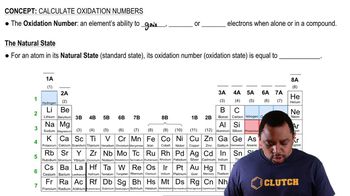Here are the essential concepts you must grasp in order to answer the question correctly.
Balancing Chemical Equations
Balancing chemical equations involves ensuring that the number of atoms for each element is the same on both sides of the equation. This is based on the law of conservation of mass, which states that matter cannot be created or destroyed in a chemical reaction. To balance an equation, coefficients are adjusted in front of the chemical formulas to achieve equal atom counts.
Recommended video:
Balancing Chemical Equations
Redox Reactions
Redox reactions, or reduction-oxidation reactions, involve the transfer of electrons between species. In these reactions, one substance is oxidized (loses electrons) while another is reduced (gains electrons). Understanding the oxidation states of the elements involved is crucial for identifying which species undergo reduction and oxidation during the reaction.
Recommended video:
Identifying Redox Reactions
Oxidation States
Oxidation states (or oxidation numbers) are assigned to atoms in a compound to indicate their degree of oxidation or reduction. They help in tracking electron transfer in redox reactions. For example, in the reaction between hydrochloric acid and potassium permanganate, the manganese in permanganate is reduced from an oxidation state of +7 to +2, indicating a gain of electrons.
Recommended video:

 Verified step by step guidance
Verified step by step guidance


